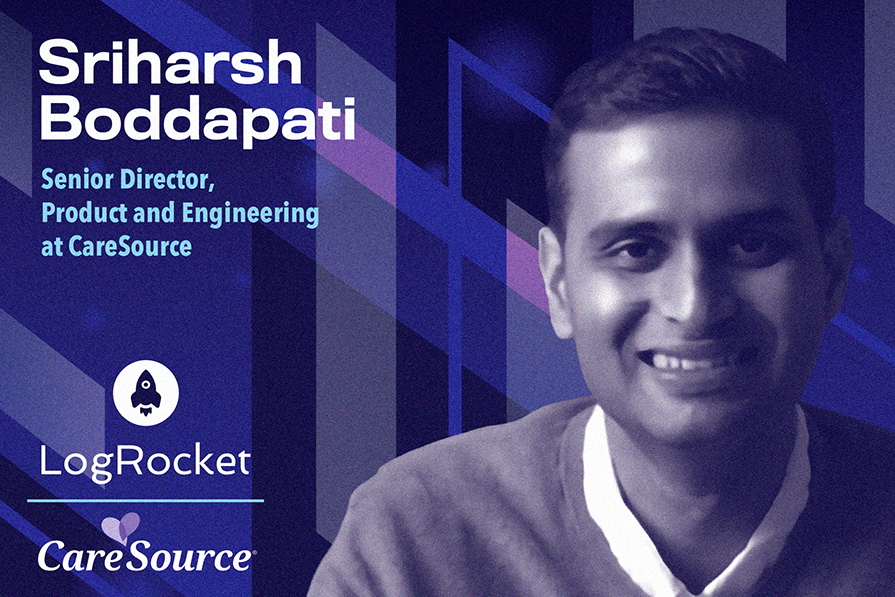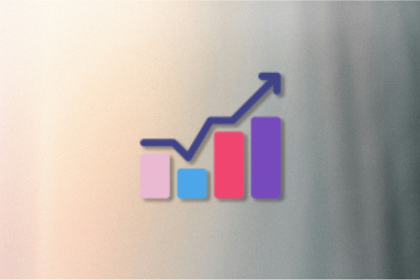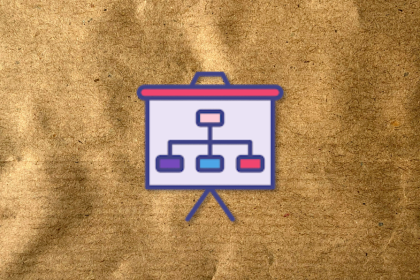Sriharsh Boddapati is Senior Director, Product and Engineering at CareSource, an innovative and value-based healthcare company. He began his career in software engineering at Societe Generale, a financial services group, before getting his Master’s degree from Carnegie Mellon. Sriharsh then joined product management at ExpenseAnywhere before spending the next six years at SDLC Partners, a customized digital solutions firm. Before his current role at CareSource, he worked for Meta where he led various initiatives in the Integrity organization focused on ad and content violations.

In our conversation, Sriharsh talks about lessons he learned from working in big tech and how these principles could benefit healthcare, and vice versa. He shares his efforts to apply human-centered design to healthcare technology, as well as how regulations and compliance can serve to bolster rather than hinder product design.
One of the most common misconceptions is that healthcare platforms and products are difficult to build to benefit patients. Outsiders often think that because the healthcare ecosystem has competing incentives, none of them prioritize the patient experience. I believe that misconception is no longer true.
There have been some key changes in healthcare over the years, specifically around value-based care models. Everyone right now, from providers to payer organizations and regulatory bodies, is incentivized under this value-based care model to focus on the patient experience. The payoffs for various players are tied to better patient outcomes. Providers are reimbursed based on how healthy their patient cohort is. Payers make more money if you have a healthier patient cohort.
This shift has opened up a new white space in the healthcare industry. This has led to more traditional product engineering concepts applied to healthcare, because now, it’s about what makes the patient experience the most valuable. What can we provide to the patient to make them feel good about coming back to the product? How can we use data in novel ways to draw insights about the patient itself, and also about the holistic health of the patient right now? The healthier they are, the more incentives work in our favor.
I have a slightly contrarian take on this that may sound counterintuitive. In my experience, compliance and regulations actually give us a lot of insight into the mental map of the various players in the industry. It can be very useful when we’re trying to build products or platforms in our space because it nudges us to always think about what they each care about. This is valuable information that anybody can use, because we often never know if we’re on the right track until we’re too far along in the product process. These can act as those flagpoles very early on.
Also, one thing to keep in mind is that the healthcare industry has evolved greatly. The first employer-payer setup was done right after World War II, and Medicare and Medicaid came in 1965. There’s been a huge evolution over time, and we need a rubric to track these changes. Regulations provide this for us so we can ask the right questions.
When we think about regulations as guardrails instead of tensions, we can move and iterate in the right space faster. It’s actually a bolster, to an extent.
Of course, I’m not an expert HCD practitioner. I’m just somebody who’s worked in product and engineering teams that have benefited from having HCD designers in the ecosystem. My perspective comes at this from two angles: the patient and then everybody else.
If we think about the patients themselves in a patient-centric model, there are a lot of nuances around meeting them in their care setting. They have specific needs, and that particular setting can only be driven by an HCD principled design process. That’s where we’re thinking about empathy, emotions, and how to meet the user where they are.
We can understand the differences between designing for ambulatory care or inpatient settings versus the emergency room. The emotions are very different. As a result, the persona itself changes based on the level of care that they need, and it changes quite drastically. Taking that into account in the HCD process is absolutely an untapped opportunity.
On the “everybody else,” non-patient side of it, regulations leave very narrow room for error. They reduce the amount of risk we can take. But actually, if we step back and think about it, the best way to make ourselves compliant is by building against the user’s mental model. The more we can meet the user where they are, the fewer mistakes they will make and the less inaccurate information they will provide. If we frame it that way and build it into our design process, that is where the untapped potential is.
I come from big tech, where moving fast was a big emphasis. That has benefited my time in healthcare quite a bit. I move fast and focus on shipping an incremental, usable product out there every time. This is an area where healthcare has struggled with for a long time. Now, this is where I see big tech leaders entering healthcare helping drive change.
The healthcare system is very fragmented. There are multiple data formats, multiple integration patterns, personas, and settings. Building for each of these factors can be very challenging. Unless we’re agile and shipping fast, we are never going to be able to get a usable product out there. That’s one principle I think that healthcare has really benefited from.
The second one would be a change in the innovation mindset. It’s now starting to take shape in the healthcare industry, and what we’ve been taking from big tech. There’s an idea out there that innovation in the healthcare industry is stifled because big players take up too much space. If we think about it now, it’s much harder for a big player to pivot to a patient-centric model than it is for a new entrant to do it.
They’re coming in with big tech principles like, “I know the strategies to increase virality. I know the strategies to increase user retention. I know the strategies to increase user growth and to monetize it.” Applying those in our industry has created a healthy tension between the existing players who are now struggling to innovate versus the new entrants.
The way I see product and engineering teams shifting their mindset is that there is no silver bullet to get to a compliant, accurate product in healthcare. The paradigms are the same. There’s no magical principle that people use to get and create a product that’s compliant, accurate, consistent, and reliable. They get there by focusing on who is using the product and meeting their needs where they are.
For example, in a healthcare payer setting, there is a massive amount of claims coming in. It’s 24/7 — claims get filed on nights and weekends, not just business hours. When we have such a vast amount of data, we have to be accurate about every decision in the claim process. And the only way to get that right is by understanding the provider’s mindset, who is authorizing it, and the patient’s mindset, who is asking for care. The more we’re able to meet their needs and understand the information we need to make claim decisions, the more accurate it will be.
The only way to build compliant, reliable, and accurate systems is by thinking about the user. That’s when the user’s seamless experience starts to become an enabling factor.
One of the biggest insights for me is that healthcare leaders are building for the long-term and sustainable paradigm, even at the cost of immediate adoption or virality. When we, as engineering and product teams, build products, we invest in aspects that don’t impact the users right away or at the beginning of the product lifecycle.
When I was in big tech, the focus was to first build what the user needed and get that flywheel going. We baked in the trust and safety to an extent from the beginning, but more so toward the end. However, we would never compromise a product design or strategy for, say, sustainability or trust and safety right away, right? Healthcare does the other way around, and I think that actually provides a better foundation. They’re making those trade-offs early in their product roadmap to build something to ground us in accurate and compliant systems from the get-go. Big tech would benefit from baking this into their process earlier as opposed to later.
Also, as we move into AI and ML models for building products, trust and safety become even more paramount. The only way to retain my users for a product built on an LLM is by providing them long-term value. If we demonstrate any trust, safety, and privacy issues, we’ll quickly lose that retention, and the flywheel will fall off. This is why now, I’m more dependent on my users’ trust that I can give them accurate information using an LLM model than I was ever before.
That is one thing that big tech can really learn from healthcare. How do we build those from the get-go? How do we make those trade-off decisions very early on? How do we invest in that product roadmap in the early stages instead of doing it when we get enough traction?
I don’t know if this is accurate for all companies, but it’s been true in my experience. When big tech tries to enter a new market, it needs to learn two things. One is the variation in the user’s needs, and the second is the regulations. GDPR comes to mind, and many companies struggle with it. They invest a lot of money to try to figure out how to be compliant.
I find that healthcare does it differently. They embrace the nuances in the new market that they’re going into. They don’t subscribe to the idea that their product has to fit into the market. They’d rather say, “If this does not fit, let me make something for that particular market and get the traction there.” That mindset in the healthcare industry, especially when entering new lines of business or geographical markets, is great. They don’t shy away from the variations and nuances of user needs. Instead, they try to build around it and build for it.
And when regulation changes, which happens often, these organizations can react better because they’re not trying to fit it into their product. They’re just trying to build for it as it comes along. Healthcare really emphasizes this, and that’s what allows them to take the load of all these regulations, respond to them, and remain compliant.
In big tech, on the other hand, it was more like a friction point. We’d say, “Oh no, we have this regulation that we have to comply with. Now, we’ve got to change all of this.” In healthcare, it’s like, “OK, this user population is very different. They have more sick people in this setting. Let’s go and do that for them, and then we’ll figure out the regulations and build for that.” That agility enables healthcare to meet people where they are. It’s a different appetite, and I find that big tech could use that.
I’ve realized that the fundamentals of how you design good products have not changed. It’s not like each industry has a different definition of what a good product looks like. They may get there a little bit differently, but they both know what it means to build a great product. That’s one thing that most product leaders — or anyone trying to break into either space — can keep in mind.
The fundamentals of product management, such as what a good product looks like, what good engineering looks like, and what good performance looks like in a product, are all the same. It’s just that the settings are different, and you have to match that.

LogRocket identifies friction points in the user experience so you can make informed decisions about product and design changes that must happen to hit your goals.
With LogRocket, you can understand the scope of the issues affecting your product and prioritize the changes that need to be made. LogRocket simplifies workflows by allowing Engineering, Product, UX, and Design teams to work from the same data as you, eliminating any confusion about what needs to be done.
Get your teams on the same page — try LogRocket today.

A practical guide for PMs who want to stop being bottlenecks, delegate smarter, and lead teams effectively with a clear ownership framework.

Stop letting unreliable data block features. Treat data as inventory to track quality, ownership, and ship with confidence.

Learn why slide decks slow teams down and explore better tools like whiteboards, PRDs, and prototypes to improve collaboration and alignment.

AI PM roles are evolving fast. Learn the five types of AI PMs, the skills they need, and how they shape AI products across industries.